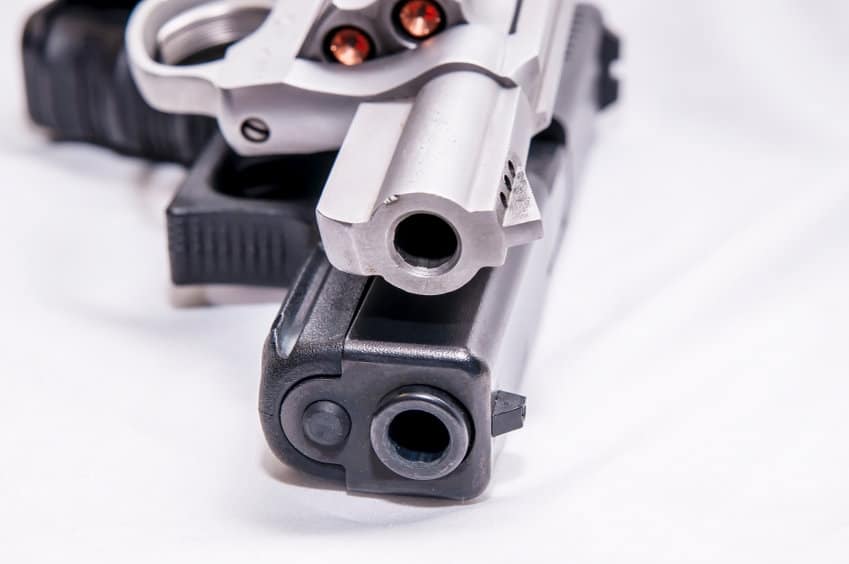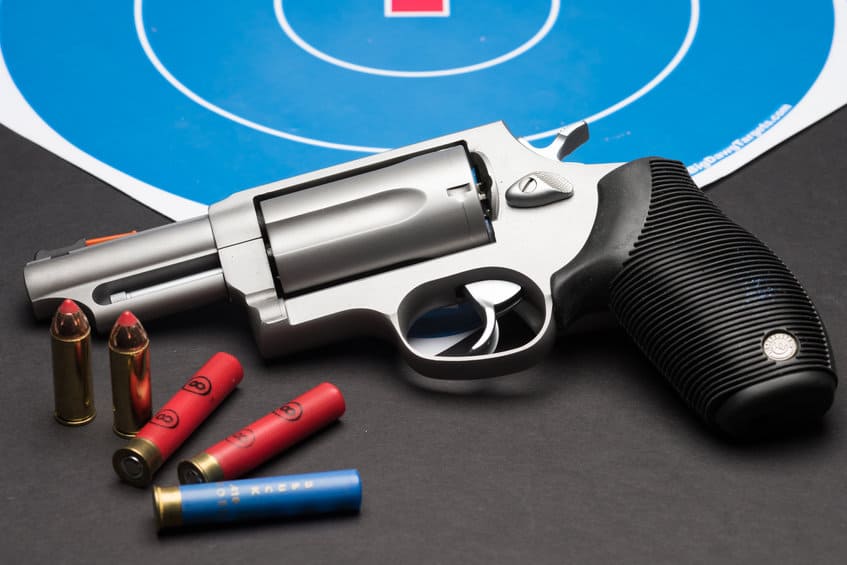
For the briefest of moments in history, a rather strange and futuristic weapon was available to the public. I first saw one in the Cody Museum in Cody, Wyoming when I was sixteen. It looked like a ray gun and was unlike anything I had ever seen before. This novel 13mm handgun was called the Gyrojet.
Table of Contents
What was it?
The Gyrojet pistol was an oddity. It did not fire conventional ammunition, but rather it served as the launcher for a .511 caliber miniature rocket. The Gyrojet name came from the angled exhaust ports on the projectile. These ports caused the projectile to spin, thereby increasing (in theory) accuracy.
Gyrojet handguns were large, about the size of a Colt 1911, but were lightweight. There was no combustion to contain, so there was no need for heavy machined parts. Nearly the entire pistol was built out of Zamac alloy with a thin tube for a barrel.
How did it work?
The operation of the weapon was simple. The rocket rested against a fixed firing in the back of the barrel, sandwiched between the sliding top cover and the round below it. After the trigger is pulled, the hammer rises, striking the rocket on its nose to drive it into the firing pin, igniting the rocket. The little rocket then pushes the hammer back down on its way out of the barrel, cocking the mechanism for the next shot. The rockets were not explosive, so hitting them on the nose was no big deal.
Loading the Gyrojet was likewise just as simple. The open the top cover, cock the hammer, push six rockets down into the magazine, and close the top cover. The weapon was then ready to fire.
Ballistic performance
Originally intended as an armor-piercing weapon, the Gyrojet left much to be desired in its performance. As a rocket, the projectile had to accelerate to full speed over distance, much like a dragster. Muzzle velocities were very low, 100 feet per second in some cases. Final speed could exceed 1200 feet per second, but not until nearly sixty feet from the muzzle. Topping off this dichotomy was the fact that the rockets did not fly very straight. Some of this was due to shortcuts taken in the production of the rocket components, for example, sometimes a nozzle would plug with faulty propellant causing the projectile to corkscrew. One military evaluator remarked about the Gyrojet that if your target was close enough to hit, you couldn’t kill it, but if it was far enough away to kill, you couldn’t hit it. Or, as David Petzel put it, the Gyrojet set standards of inaccuracy as yet unequaled.
Vietnam
Since the Gyrojet was an attempt to win military contracts, it is only natural that a few found their way into the jungles of the Vietnam war. A couple are known to have been purchased by officers and taken as personal sidearms. At least one was tested in the field by the Special Operations Group (SOG).
SOG acquired the Gyrojet in the belief that it was a silent weapon. It was not. It is quieter than a 9mm but not mouse-quiet. Testing showed good penetration of plywood barriers past sixty feet but little accuracy. Other testing demonstrated that the rocket would push clean a barrel full of mud. Those that used the Gyrojet praised its light weight and ability to work (mechanically at least) in muddy conditions. Reliablity of the rockets degraded severely in the humid climate of Vietnam, and misfires were common.
Medal of Honor recipient 1st Lt. George K. Sisler carried one of these weapons on the day of his heroic and final action, and may have used the weapon in combat. This same pistol was possibly carried later by Franklin Miller, and he may have also used it during the firefight that won him a Medal of Honor.
Much mystery surrounds the Gyrojets used in Vietnam. There are snippets of information out there, but many older in-depth sources, including the veterans’ personal recollections, are on web pages that are no longer available. The only complete resource is Mel Carpenters’ book An Introduction to MBA Gyrojets and Other Ordnance, found at Gyrojet.net.
Conclusion
Despite its cool factor and space-age technology, the Gyrojet pistol died on the launchpad. It has become a footnote in firearms history that will likely not be revisited, which is a shame as I would love to have seen how the tech would have improved over the years had it remained in production. The 1968 Gun Control Act prohibited pistols over .50 caliber, ending production of the 13mm handgun. MBA introduced a .49 caliber variant, but it was too little, too late, and production ceased shortly after. However, the technology made its way into a line of distress flares, so you can still get a Gyrojet, just not a pistol.



